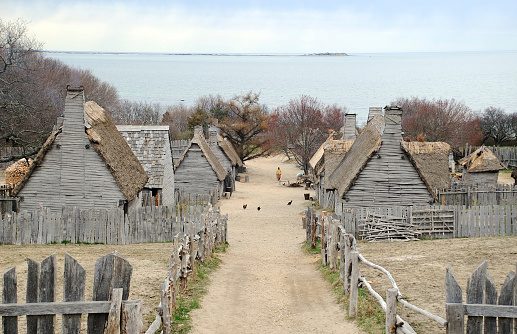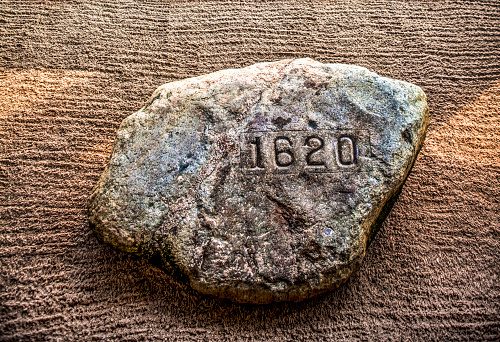The pilgrims were some of North America’s first European settlers. Who were they? And what did they bring with them on their perilous journey to the new world? Most importantly, was there any gold at the First Thanksgiving in America?
Many of the pilgrims were wealthy

When the first Mayflower expedition set off for the New World in 1620, travelers included wealthy pilgrims. As members of elite Puritan families in England, some pilgrims held vast estates with profitable farmland. However, settling in the new world meant foregoing their wealthy status in England and committing to a life of the bare essentials.
Little information exists about what the pilgrims carried on their rough and dangerous journey. For many years, experts theorized what items may have comprised the pilgrims’ belongings.
It wasn’t until 2012 that historians uncovered a manuscript that listed the provisions of some of the original Mayflower settlers. Though many of the pilgrims were quite wealthy, you wouldn’t guess it from what they carried with them. The official provision list included only the necessities: food, drink, clothing, tools, and weapons.
In search of god and gold
As one historical study noted, the pilgrims did not venture to the new world in hopes of finding wealth but rather to escape the religious persecution that was widespread in Europe.
But the same cannot be said for the wealthy merchants who financed the Mayflower expedition. After witnessing the profitability of the Jamestown colony in America two decades prior, these financiers expected to see their share of gold once the Plymouth Colony established basic commerce in the vast, unsettled region of contemporary New England.
Their hopes, however, ultimately dashed. The Plymouth colony’s first winter was disastrous; disease and starvation reduced the colony’s population by two-thirds. And though initial encounters with the surrounding indigenous tribes resulted in the fabled First Thanksgiving, relations quickly reverted to conflict.
The Plymouth colony eventually survived and history regards it as one of the most significant settlements in North American history. The individual pilgrims brought very little physical gold to this region of America, and what gold they did have was mostly contained in jewelry and keepsakes. Nonetheless, their investment in the New World opened the door to generations of wealth.
CLICK HERE to sell your gold, silver, platinum, and palladium.
It doesn’t have to be Thanksgiving to refine your gold with Garfield! Established in 1892, we have more than a century of precious metals refining experience. We serve various industries, including dental offices, private individuals, jewelers, pawnbrokers, and more!
Call us today at 888-677-9254 to find out why Garfield is a premier precious metals refinery.
Also, stay tuned to Garfield Refining’s blog for more fun and helpful articles about precious metals history, such as The Top 3 Most Popular Gold Rush Ghost Towns, Does Fort Know still have Gold?, and How did Gold get its Name?

